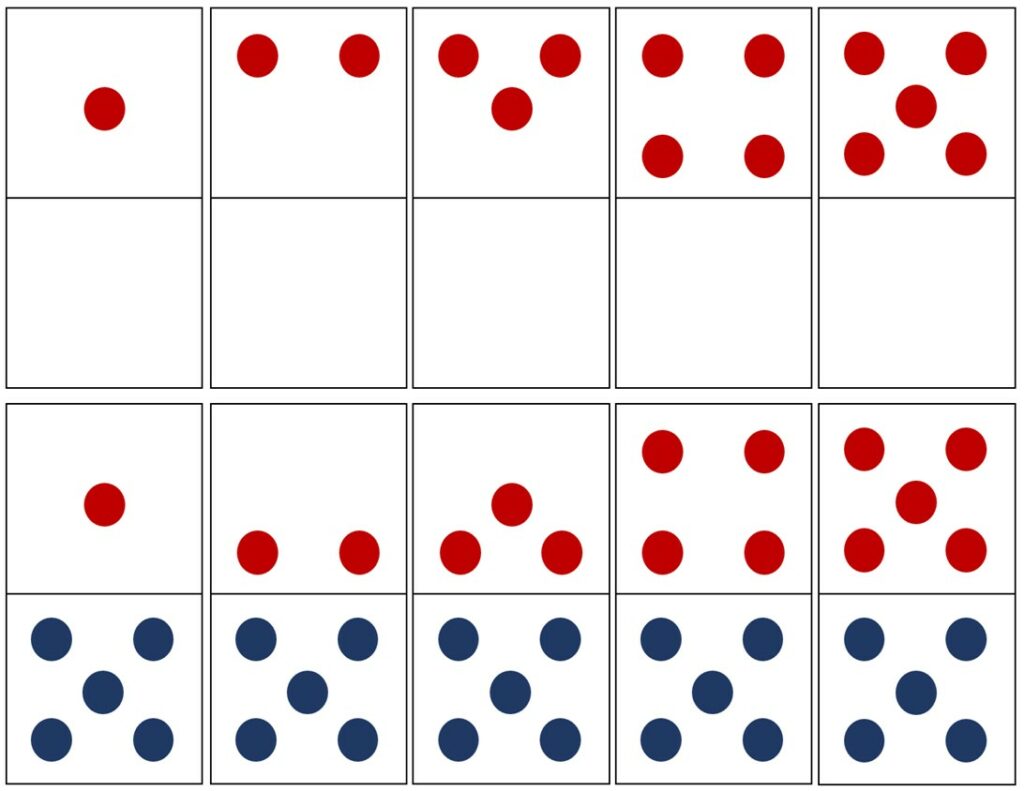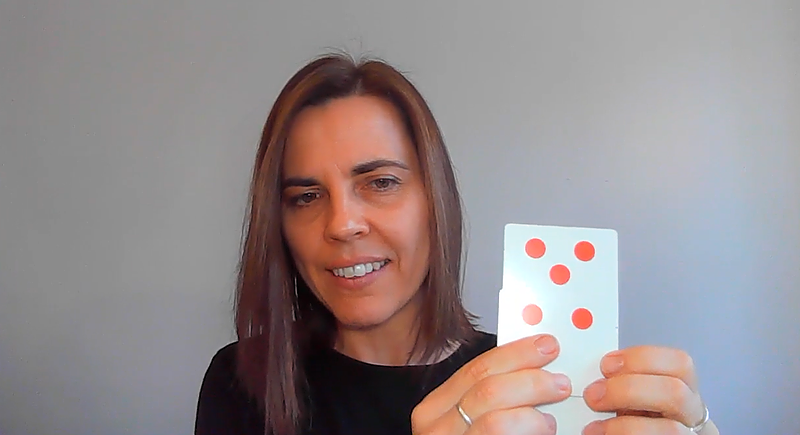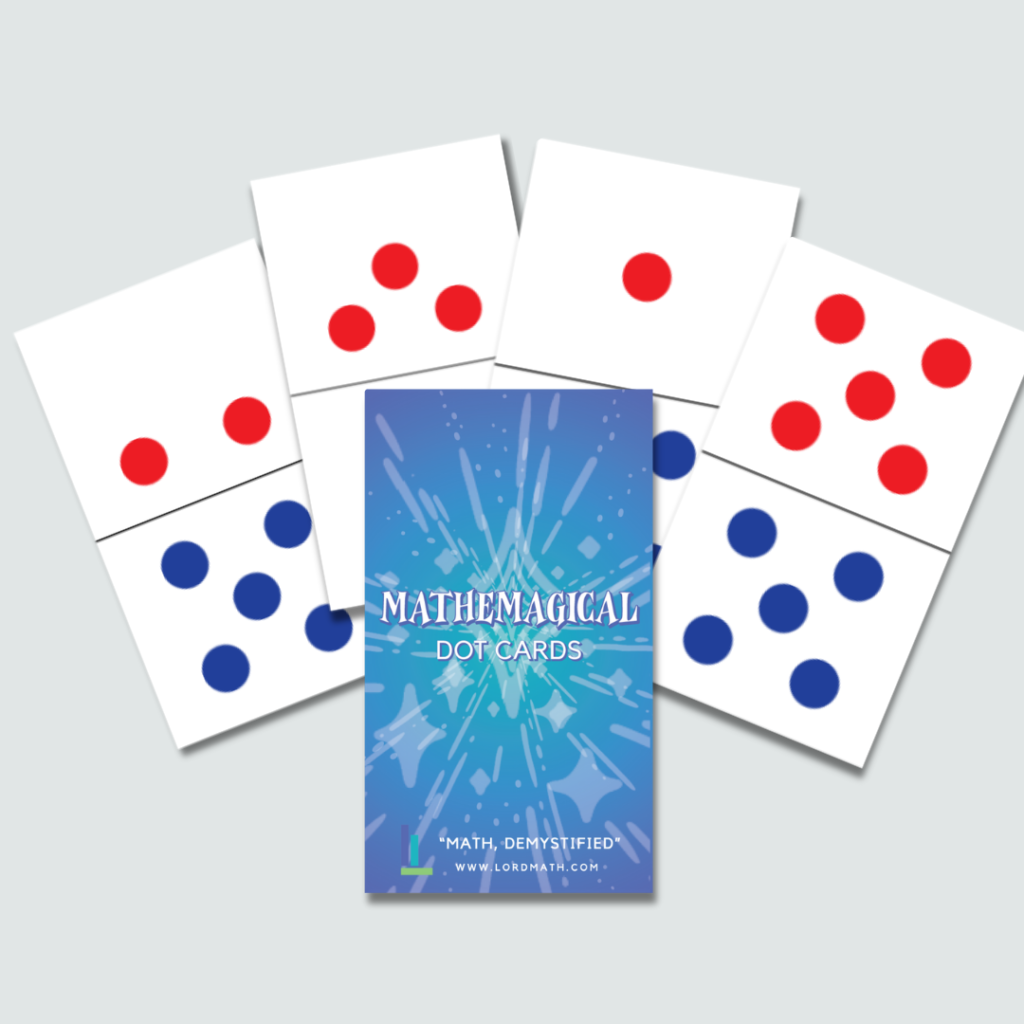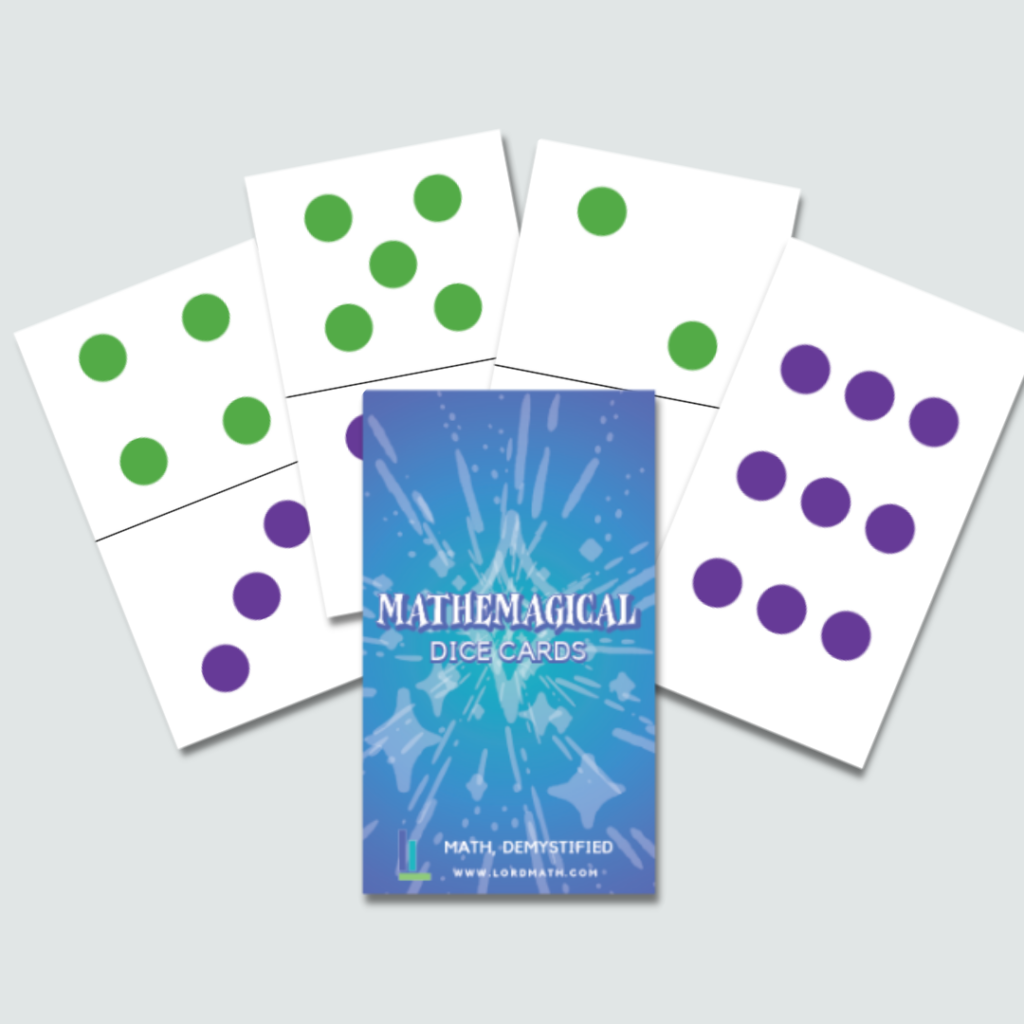Often people ask me what my top recommendations are for improving math instruction. My #1 answer: use Dot Cards!

Dot Cards are an absolutely essential foundation for developing number sense – there is no alternative.
Why? Because Dot Cards strengthen and build on our innate ability to subitize, rather than emphasizing counting. I believe the biggest misconception in math instruction today is that we know “how many” based on our ability to count.
Think about this: animals are able to understand and identify how many, even though they have not gone to school, acquired language, or learned how to count. How do they do this? Through their innate ability to subitize.
The Problem with Counting
The problem with counting is that it’s not an innate ability, and it requires a great deal of cognitive effort. In order to count correctly, children need to learn all the number words (acquire language), sequence them correctly, match them to individual objects with 1-to-1 correspondence, then recognize that the last word they said represents the quantity of objects (cardinality).
And even if they do all this correctly? They still may not understand the quantity the number word represents.
Building strong number sense is crucial for students to move beyond these challenges. Try this: count a group of objects with 1-to-1 correspondence while saying the alphabet. Perhaps you arrive at G, or M – do you have an understanding of how many that really is? Just because we say words in sequence does NOT mean our brains understand those words as increasing in size. Try counting while saying the days of the weeks or the months of the year and you’ll get the idea.
So what happens in schools?
Often I see schools start with “quick images” where students are subitizing, but then drop this and return to traditional, ineffective methods of counting by ones for the rest of their math instruction.
I believe this happens because the vast majority do not know how subitizing can actually be the foundation for learning ALL numbers and ALL math facts.
The key is to use Dot Cards and Dice Cards arranged into groups that students can subitize and then groupitize (combining small subitizable amounts into a larger amount, without counting). The visual patterns and colors of the Dot Cards and Dice Cards support our ability to understand how to compose and decompose numbers, which leads to better strategies.
Intentional use of dot patterns helps students learn the combinations for all numbers up through 10, a key skill missing from most – if not all – math curriculum today.
Want to learn more about using Dot Cards?
Check out our Teaching with Dot Cards video training!

In this 35-minute training video, I demonstrate how to introduce Dot Cards and use them to develop subitizing, groupitizing, and number sense. Watch me model teaching addition and subtraction, make 5 and 10, doubles strategies, and more!
Why You’ll Love These Cards:
- They offer a visual, concrete approach that students can easily grasp, regardless of language.
- The dot pattern arrangements develop essential strategies like making 5, 10, adding, subtracting, and doubling.
- They can be seamlessly integrated into your existing lesson plans – just use them in place of 5- and 10-frames.
Equip yourself with these tools and watch your students grow!


